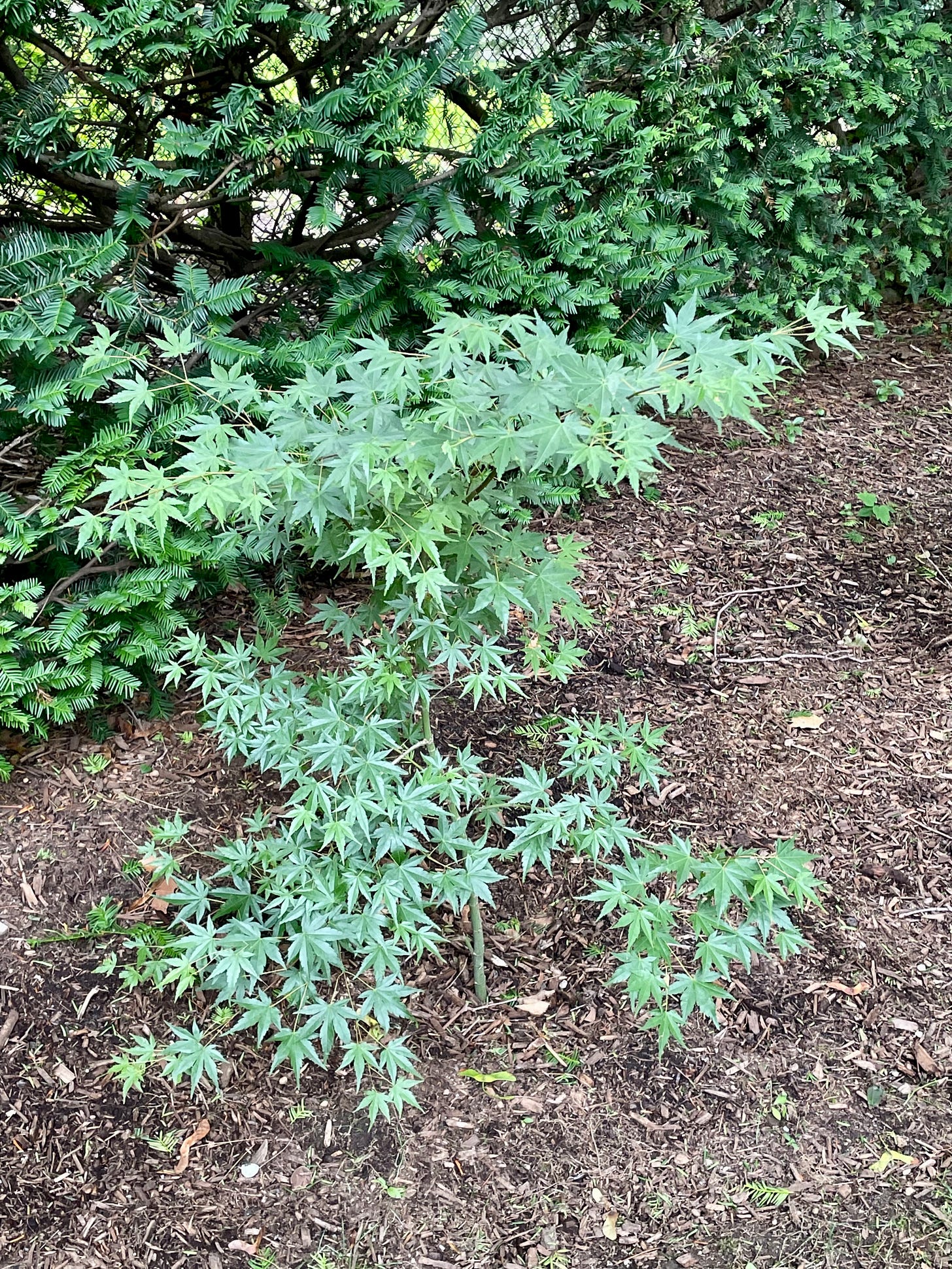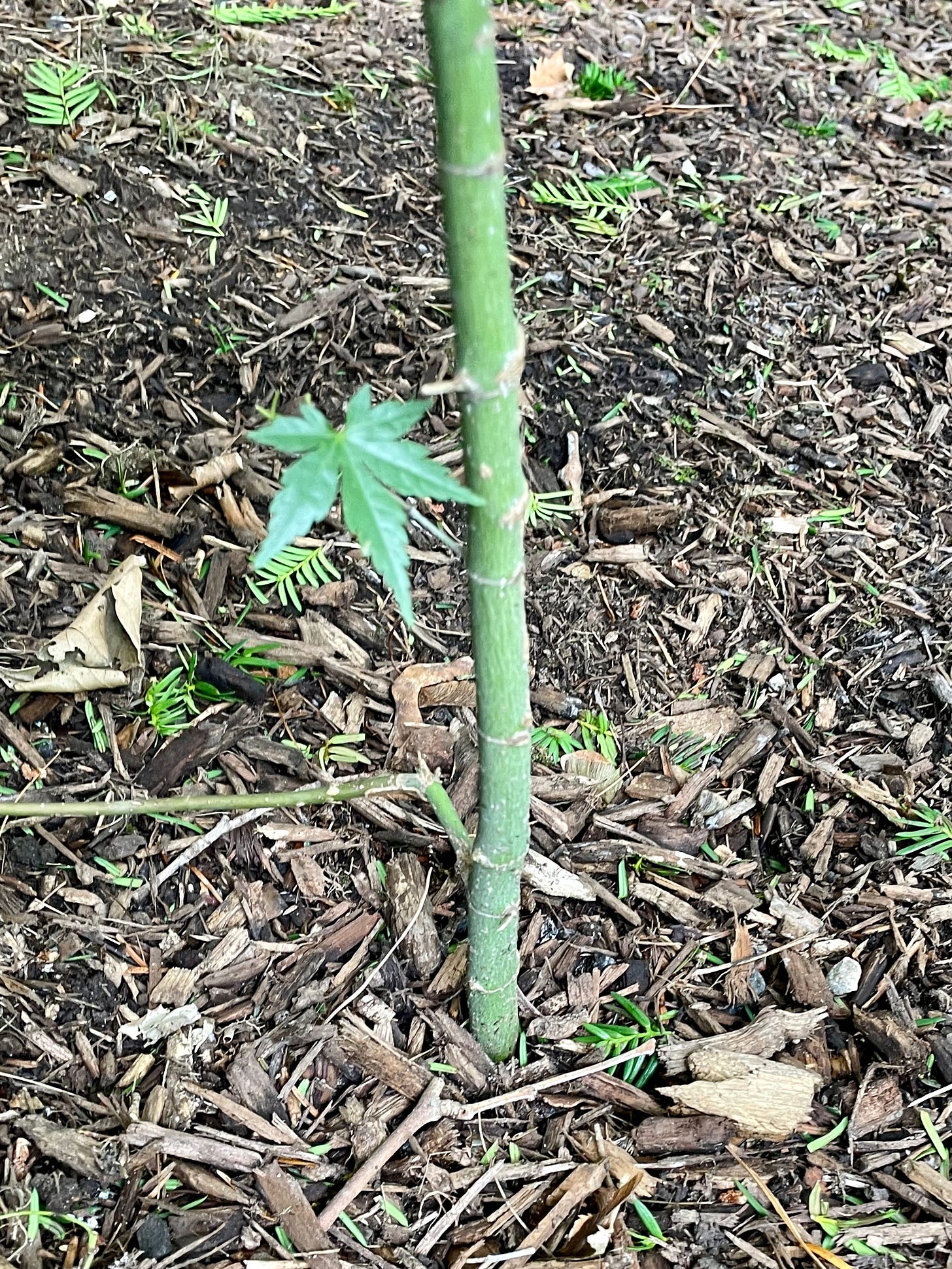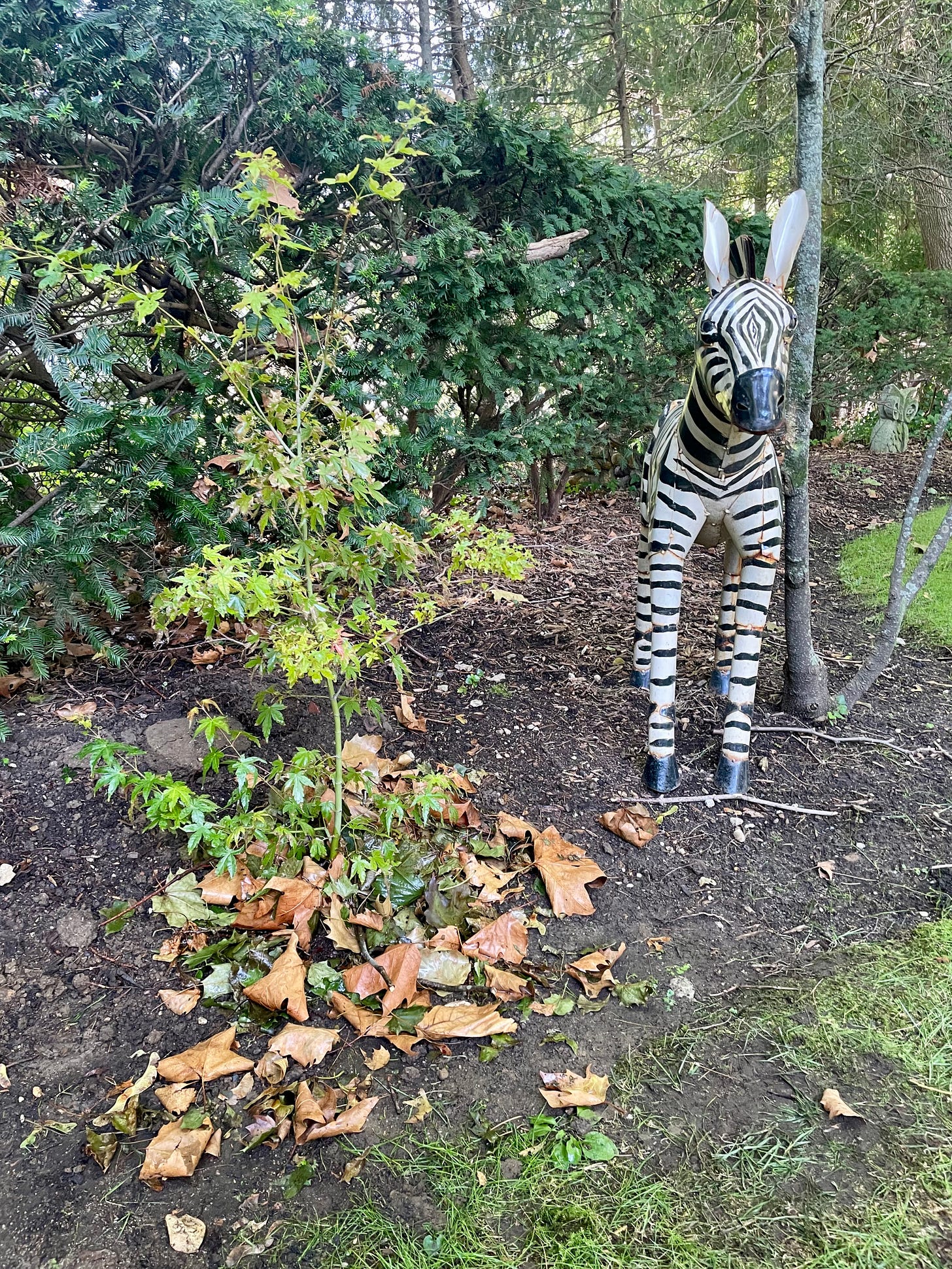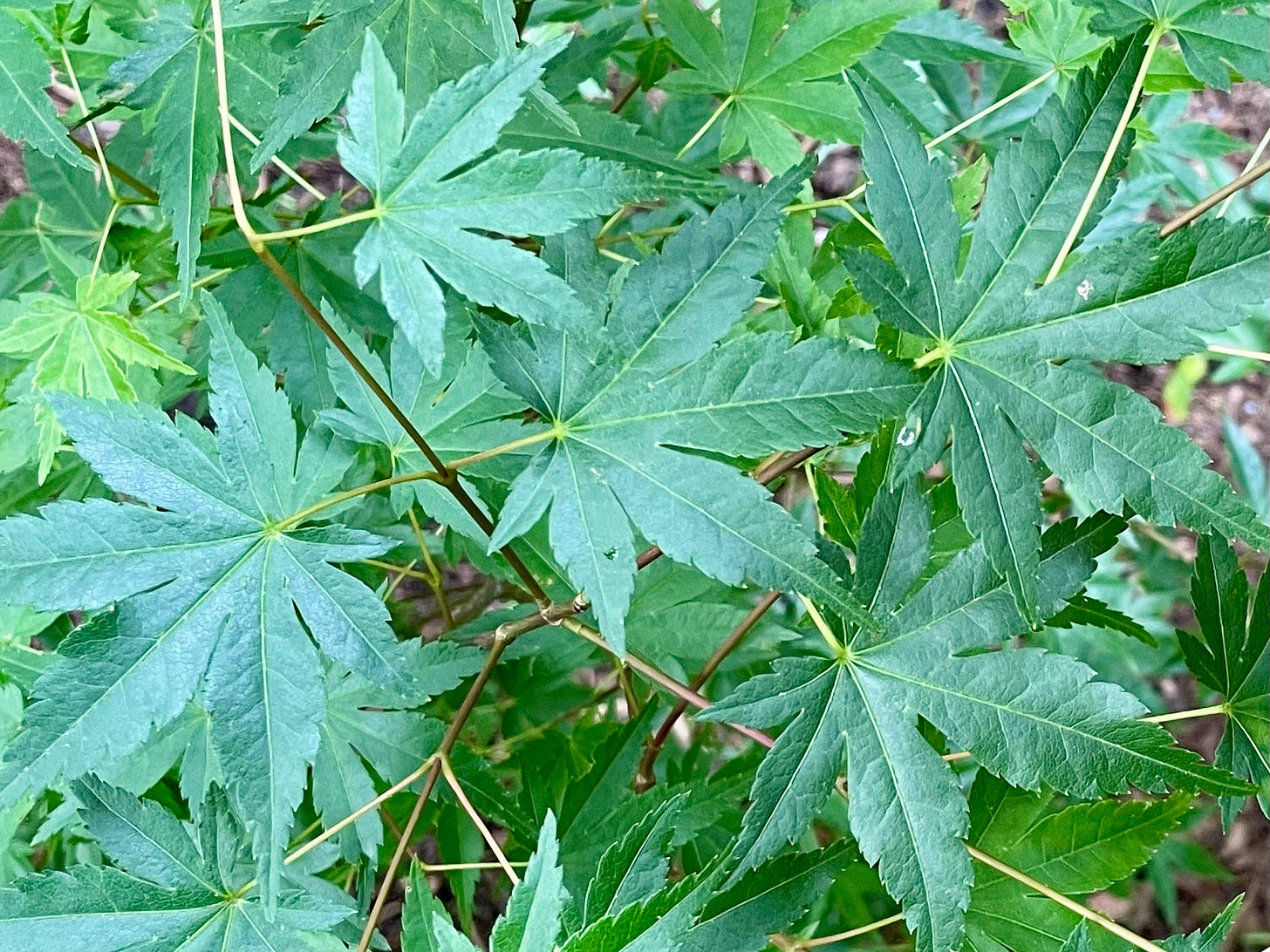I have to make some decisions about my Japanese maple.
Back in October, I transplanted this tree from its pot to my dad’s backyard. The tree is years away from any proper bonsai work; all I’m focused on now is thickening the trunk, and the best way to do that with any tree is planting it into the ground. You know, where trees grow.
My plan was to give the tree a few years of growth, then chop it to a stump, dig it up, and plant it in a pot to start its bonsai journey. I also had grand aspirations of propagation with a method called air layering. I envisioned a small army of Japanese maples, each cloned from the top growth of the tree before it.
Now plans have to change.
My dad’s backyard is shaded by these enormous old red maple trees, whose canopy is so dense that the grass and other plants below don’t get much sunlight. My dad and stepmom plan to thin out that canopy and structure the yard into a proper garden. I like this plan. But the spot where my little Japanese maple is growing will be turned into a fire pit or hydrangea bed, so it has to move.
Japanese maples are understory plants; they naturally grow beneath the canopies of larger trees. I figured this one would enjoy living among its native cousins, and for the most part it has. The new growth is decently strong and the trunk is starting to get some bends from the wind.
That trunk remains meager, though. Here’s how it looks now.
And here’s 11 months ago.
Not much of an increase in girth. After transplant, the next year of a tree’s life is mostly spent in recovery. This new growth is adequate, but it could be more vigorous. Maybe more sunlight would do it good.
I haven’t thought about this maple much since I bought it on eBay in my nascent bonsai days. Here are my options for what to do with it.
1. Transfer it to a large pot and resume container growth
Pros: Flexible and easy to move around, both to get out of the way of new plants and to chase better sunlight.
Cons: A container will slow growth.
2. Plant it somewhere temporary that’s out of everyone’s way
Pros: Lowest maintenance option and keeps the tree in the ground…somewhere.
Cons: It takes at least a year to start seeing the benefits of accelerated growth in the ground. If I’m going to move the tree again next year, I may do it more harm than good.
3. Incorporate the tree into the garden’s new layout
Pros: Will allow for multiple years of ground growth and make the tree aesthetically useful as it grows.
Cons: The highest maintenance option, and a duty which falls mostly on my stepmom, who graciously waters my trees and who shouldn’t have to put up with any more mishegas.
Earlier this week I was texting with a friend who’s just started a tea collection. If you’re new here, that’s another big interest of mine, particularly fermented and aged teas like puer. This friend didn’t know what to do about his sudden influx of tea, which he’s only drinking in small doses. If you’ll permit me the gross self indulgence of quoting myself, “That’s the beauty of collecting,” I told him. “You find a tea, bring it home, get to know it a little bit, then set it aside to live its life for a while, as you live yours. And then after some time you come back together—what is it that brings you back?—and you get to reacquaint yourselves. See how the other has grown.”
This is all bullshit, but drink tea for long enough and you’ll believe it too.
While we were texting I was drinking a tea I bought back in 2016. Then it hit me: that was six entire years ago. Where the hell have I been?
This is the other thing with collecting tea. You and the tea always find a way back to each other.
I’m leaning towards option 1 for the maple. It’s the easiest move for all involved and I can always plant it somewhere if a space opens up. The growth will be slower, but I’m not in any hurry to chop it down. We’ll find each other again.
Tree reading
An influx of visitors to California’s redwood forests is threatening the health of the world’s tallest tree. It’s now closed off to visitors, and trespassing comes with a $5,000 fine or six months in prison. [San Francisco Chronicle]
Old but cool news I did not know: a group of archaeobotanists (!!) believe the fig tree was the first plant domesticated by humans, before grains like wheat. [Harvard Gazette]





